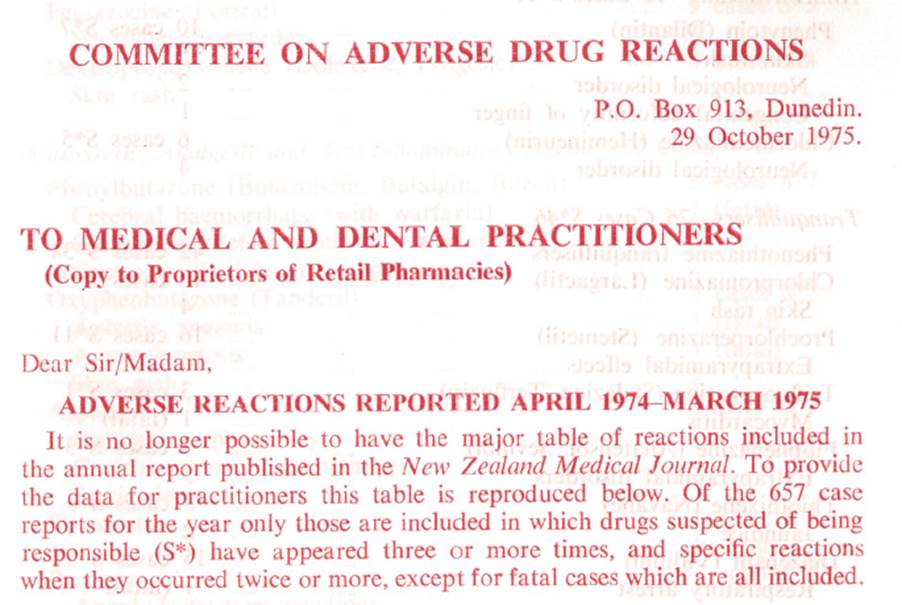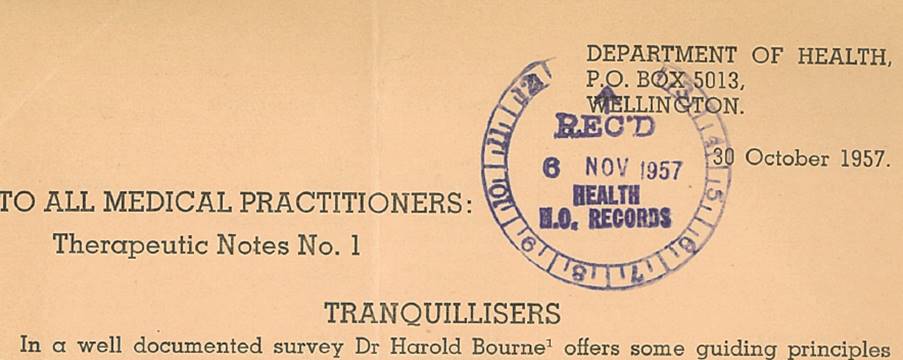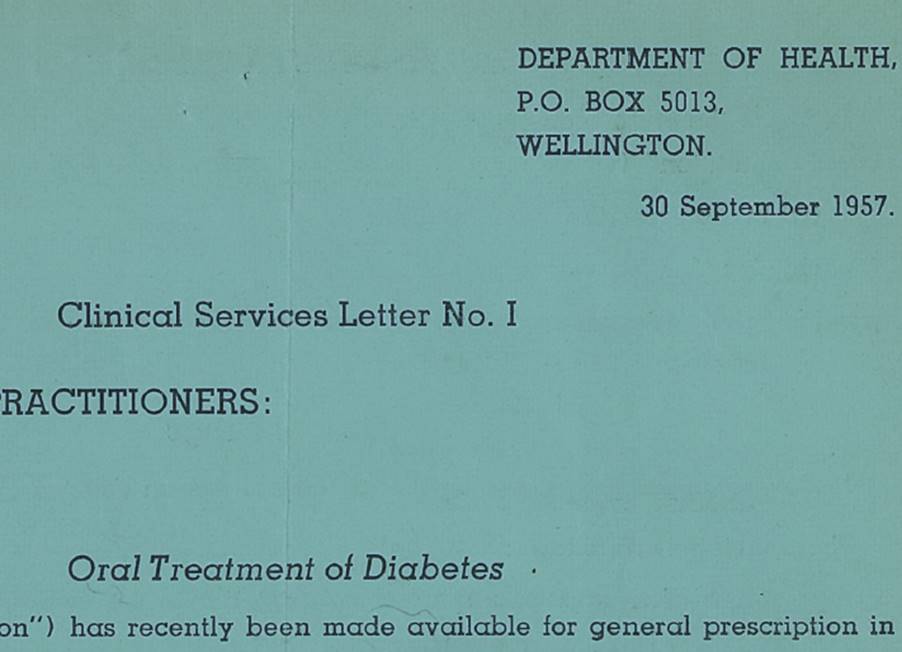Published: 18 March 2019
About Medsafe
History of Medicines and Medical Device Regulation in New Zealand
Regulation before the current Medicines Act 1981
Legislation
Legislation to introduce controls on medicines was introduced in 1877 with The Sale of Food and Drugs Act. This Act established conditions under which food and medicines could be manufactured, packed or sold. All medicines had to comply with the British Pharmacopoeia or other standard work.
In 1907 this act was replaced by the Sale of Food and Drug Act, and subsequently replaced by the Food and Drug Act 1947.
The first official requirement for the notification of new and changed medicines through the New Zealand Gazette was included in the 1962 Food and Drug Amendment Act. These provisions were reinforced in the 1969 the Food and Drug Act. Medicines that were on the market at the time were accepted without evaluation (grandfathered).
Organisational structure
When controls over the distribution of new medicines were first introduced in 1962, medicine control (the term used at the time for medicines regulation) was a function of the Division of Public Health. In 1969 control was transferred to the Division of Clinical Services, Department of Health. The division also administered the pharmaceutical benefits scheme. The section included a director, deputy director, 2 assistant directors and 2 visiting practitioners (all physicians), a pharmacologist, 3 scientists, 5 pharmacists, a statistical officer, an administration officer and 7 clerks (24 staff in total).
In addition assistance could be co-opted from:
- public health pharmacists to assist with inspection of manufacturers, wholesalers and distributers of therapeutic products
- pricing offices to price prescriptions
- experts from the National Health Institute for inspections of sterile product production
- Pharmaceutical Branch of the Chemistry Division, Department of Scientific and Industrial Research for routine testing of medicines.
The division was crown funded, no fees were charged to companies marketing medicines or medical devices.
Advisory Committees
The Medicines Assessment Advisory Committee (MAAC)
This Committee was originally established in 1970 as the Drug Assessment
Advisory Committee and met three times per year.
The terms of reference for the MAAC were:
- to evaluate and advise on the effectiveness and safety of new medicines
- consider and advise the Minister on the suitability of medicines for distribution in New Zealand
- consider and advise on any other matters relative to new medicines or the distribution of medicines
- consider and advise on any matters related to changed medicines
- consideration of application for sale outside pharmacy referred by the division
- to decide which medicines should be included in Intensified Adverse Drug Reaction Reporting Scheme. The scheme was introduced in 1977.
Restricted Drugs Committee
The role of this Committee was to advise the Minister of Health on the scheduling of medicines as prescription medicines.
Committee on Adverse Drug Reactions (CADR)
This Committee was formed in 1965 coinciding with the establishment of a national pharmacovigilance monitoring centre by Garth McQueen at the University of Otago. The Committee met three times per year.
The Committee was not a departmental committee but the Department of Health provided secretarial services and met the costs of the committee and the operation of the Registry of Adverse Drug Reactions. The Department also paid the postage on the report forms sent to the Committee’s Medical Assessor.
Standing Committee on Therapeutic Trials
This non-department Committee was set up by the Health Research Council to review clinical trial applications made to the Director-General of Health. In 1962 it became mandatory to obtain consent for clinical trials and in 1969 recommendation of the Medical Research Council was required. The Committee was established in 1970.
Pharmacology and Therapeutics Advisory Committee
This Committee advised the Minister of Health regarding the revision and updating of the Drug Tariff.
Pharmaceutical Advisory Committee
This Committee advised on the routine administration of the Pharmaceutical Benefits Scheme, particularly as it affected pharmacists
Epidemiology Advisory Committee
This Committee dealt with the control of communicable diseases and advised on the control of marketing of vaccines
National Poisons Information Centre
Independent of the Department it collated the active ingredients of medicines and the appropriate antidotes.
Work load
In 1972, 96 applications for new medicines were received; the MAAC considered 27. 135 changed medicine applications were also received.
In 1978, 173 applications for new medicines were received and 39 were referred to the MAAC for consideration. 355 changed medicine applications were also received.
In the years 1972-1978 about 25 applications for clinical trials were received each year.
200-300 samples of medicines were tested annually.
Around 20 medicines were recalled per year. In life threatening cases recalls were advised by telegram or telephone followed by a letter.
In 1978 the number of medicines was estimated at 8,000 with about 2,000 different active substances.
Manufacturers were not licensed. Inspection of manufacturing premises started in 1972 to help manufacturers improve standards.
Communication
In 1957 the appointment of a senior practitioner to visit doctors and advise on prescribing was recommended. In 1959 one doctor was appointed, later expanded to two doctors. In 1976 pharmacists were also employed to visit general practitioners to advise on rational, effective and economic prescribing.
An Annual report of CADR was published in the New Zealand Medical Journal, The New Zealand Dental Journal and the New Zealand Pharmaceutical Journal.
Bulletins prepared by CADR were circulated to all dentists, medical practitioners and pharmacists.
Information on adverse drug reactions was also included in Clinical Services Letters and Therapeutic notes
Code of good pharmaceutical manufacturing 1974
Manufacture and distribution of medicines 1978 (includes recall code)








